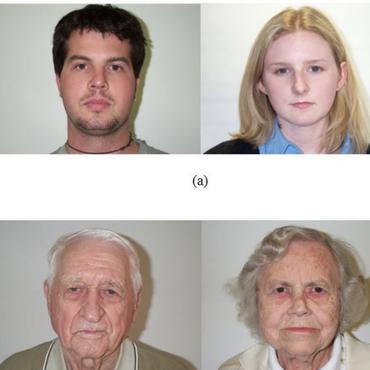Quantifying Facial Age by Posterior of Age Comparisons
We introduce a novel approach for annotating large quantity of in-the-wild facial images with high-quality posterior age distribution as labels. Each posterior provides a probability distribution of estimated ages for a face. Our approach is motivated by observations that it is easier to distinguish who is the older of two people than to determine the person's actual age. Given a reference database with samples of known ages and a dataset to label, we can transfer reliable annotations from the former to the latter via human-in-the-loop comparisons. We show an effective way to transform such comparisons to posterior via fully-connected and SoftMax layers, so as to permit end-to-end training in a deep network. Thanks to the efficient and effective annotation approach, we collect a new large-scale facial age dataset, dubbed `MegaAge', which consists of 41,941 images. Data can be downloaded from our project page mmlab.ie.cuhk.edu.hk/projects/MegaAge and github.com/zyx2012/Age_estimation_BMVC2017. With the dataset, we train a network that jointly performs ordinal hyperplane classification and posterior distribution learning. Our approach achieves state-of-the-art results on popular benchmarks such as MORPH2, Adience, and the newly proposed MegaAge.
PDF AbstractDatasets
Results from the Paper
 Ranked #7 on
Age Estimation
on MORPH Album2
(using extra training data)
Ranked #7 on
Age Estimation
on MORPH Album2
(using extra training data)





 MegaAge
MegaAge
 MS-Celeb-1M
MS-Celeb-1M
 MegaFace
MegaFace
 MORPH
MORPH
 Adience
Adience